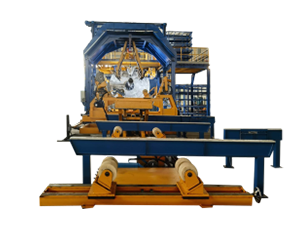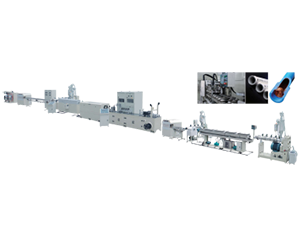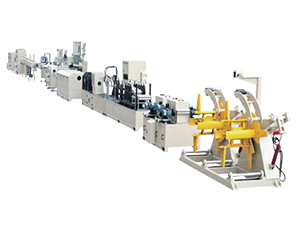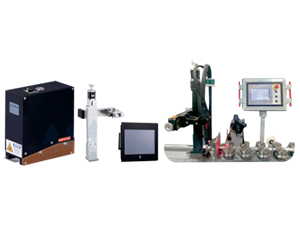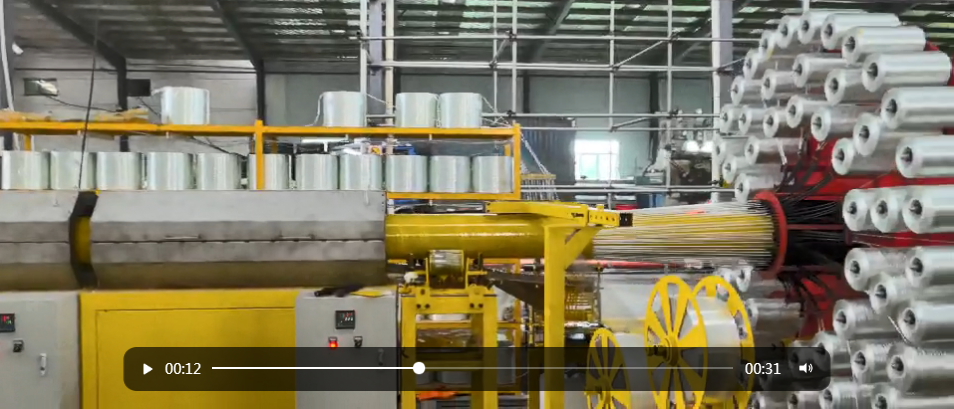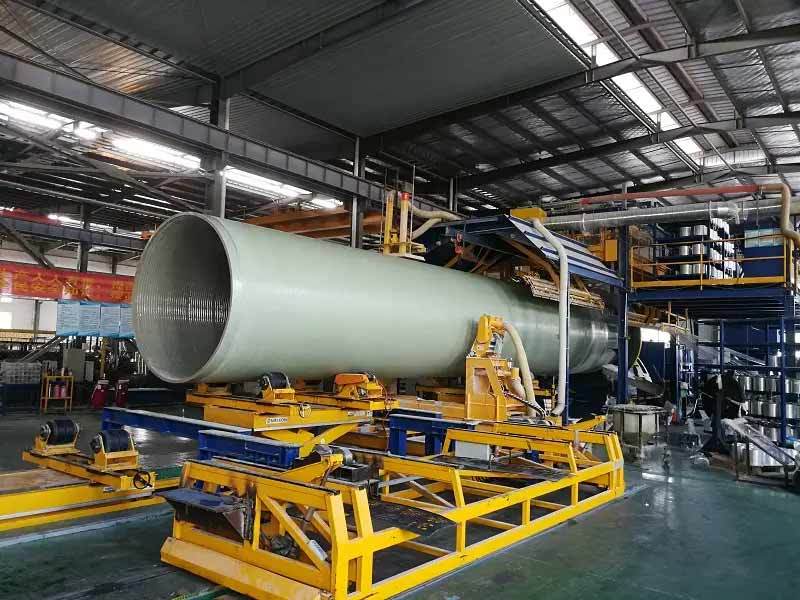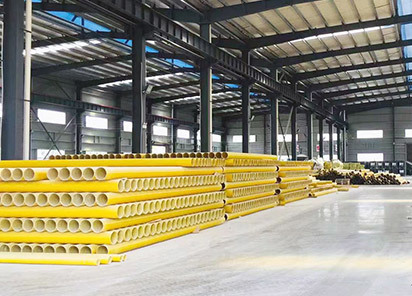Top Applications for Continuous Fiberglass Winding Machines in Industry
Jul 15,2025
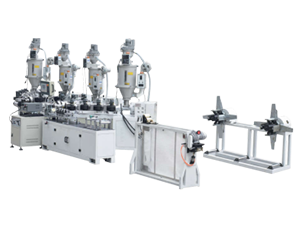
Top Applications for Continuous Fiberglass Winding Machines in Industry
Introduction to Continuous Fiberglass Winding Machines
Continuous fiberglass winding machines have transformed the manufacturing landscape, providing enhanced capabilities for producing robust composite materials. These machines utilize fiberglass filaments, which are wound under controlled tension around a mandrel to create hollow or solid forms, depending on the application. Their versatility, efficiency, and strength make them a popular choice across various industries, including aerospace, automotive, construction, and marine sectors.
Understanding the Technology Behind Continuous Fiberglass Winding
Continuous fiberglass winding machines operate through a sophisticated process that combines technology and craftsmanship. The winding process typically involves the following steps:
1. Material Preparation
Fiberglass roving, a collection of continuous strands of glass fibers, is unwound from spools and passed through a resin bath, where it is saturated with a thermosetting resin. This is vital to ensure that the fibers bond effectively during the winding process.
2. Winding Process
The saturated fiberglass is then wound around a rotating mandrel. The machine's computer-controlled system allows for precise tension and angle adjustments, thereby optimizing the fiber orientation according to the required specifications.
3. Curing and Finishing
Once the desired thickness is achieved, the structure is cured in an oven or using ultraviolet light to harden the resin. After curing, the finished composite part is removed from the mandrel, ready for further processing or application.
Key Applications of Continuous Fiberglass Winding Machines
Continuous fiberglass winding machines are employed in various sectors, each benefiting from the unique properties of the resulting composite materials. Here, we delve into some of the most significant applications.
1. Aerospace Manufacturing
The aerospace industry heavily relies on lightweight materials that offer exceptional strength-to-weight ratios. Continuous fiberglass winding machines produce components such as:
a. Aircraft Wings and Fuselages
Fiberglass composites are used in both primary and secondary structures, where weight savings are critical. Wound composites allow for complex shapes while maintaining the necessary stiffness and durability.
b. Engine Components
Winding technology enables the production of engine parts that can withstand high temperatures and mechanical stresses. These components are essential for improving fuel efficiency and performance.
2. Automotive Industry
In the automotive sector, continuous fiberglass winding machines produce components that enhance vehicle performance while reducing weight. Key applications include:
a. Body Panels
Fiberglass-reinforced composites are used to create lightweight yet durable body panels, contributing to improved fuel efficiency and lower emissions.
b. Chassis and Structural Components
The ability to design complex shapes through winding technology results in stronger, more resilient chassis components, which are crucial for vehicle safety and performance.
3. Construction and Infrastructure
The construction industry makes extensive use of continuous fiberglass winding technology for producing a variety of components:
a. Pipes and Tanks
Fiberglass winding is ideal for producing corrosion-resistant pipes and tanks, essential for the transportation of chemicals and water in various environments.
b. Structural Reinforcement
Wound fiberglass composites are used to provide additional support and stability to structures, making them suitable for seismic and harsh environmental conditions.
4. Marine Applications
The marine industry benefits significantly from the lightweight and corrosion-resistant properties of fiberglass composites. Applications include:
a. Boat Hulls
Continuous fiberglass winding allows for the production of strong and lightweight boat hulls, enhancing performance and fuel efficiency on the water.
b. Structural Components
Fiberglass is utilized for components like masts, decks, and other structural elements, providing durability against the harsh marine environment.
5. Energy Sector
Continuous fiberglass winding machines play a crucial role in the energy sector, particularly in renewable energy applications:
a. Wind Turbine Blades
Fiberglass composites are extensively used in wind turbine blades, where strength and lightweight characteristics contribute to greater energy efficiency.
b. Composite Materials for Energy Storage
The energy sector also uses fiberglass composites for manufacturing components in energy storage systems, such as batteries and supercapacitors.
The Advantages of Continuous Fiberglass Winding Machines
Utilizing continuous fiberglass winding machines offers a range of **benefits** across various industries:
1. Enhanced Efficiency
The automated nature of winding machines significantly reduces production time while ensuring consistent quality across batches. This efficiency is crucial in industries where time-to-market is essential.
2. Cost-Effectiveness
While the initial investment in fiberglass winding machinery may be substantial, the durability and longevity of the produced components lead to lower long-term costs. This cost-effectiveness makes fiberglass composites an appealing option for manufacturers.
3. Versatile Design Capabilities
Continuous fiberglass winding allows for the creation of complex shapes, enabling engineers and designers to explore innovative designs that were previously unattainable with traditional materials.
4. Environmental Benefits
Fiberglass recycling technologies are continually advancing, minimizing waste and promoting sustainability in manufacturing processes. The lightweight nature of fiberglass also contributes to reduced fuel consumption in vehicles and vessels.
Future Trends in Continuous Fiberglass Winding Technology
The continuous fiberglass winding industry is poised for innovation and growth. Some key trends to look out for include:
1. Smart Manufacturing Integration
Incorporating IoT and AI technologies into fiberglass winding machines will enhance monitoring and control, leading to improved quality assurance and predictive maintenance.
2. Advanced Materials Development
Research into new resin systems and hybrid materials will expand the applications of fiberglass composites, allowing for even greater performance in extreme conditions.
3. Sustainability Focus
As industries increasingly prioritize sustainability, the demand for eco-friendly manufacturing processes will drive innovations in recycling techniques and the development of bio-based resins.
FAQs about Continuous Fiberglass Winding Machines
1. What are continuous fiberglass winding machines used for?
Continuous fiberglass winding machines are primarily used to produce composite materials with applications in aerospace, automotive, construction, marine, and energy sectors.
2. How do fiberglass winding machines work?
These machines work by winding saturated fiberglass strands around a mandrel, allowing for controlled tension and angle adjustments to achieve the desired shape and thickness.
3. What are the benefits of using fiberglass composites?
Fiberglass composites offer high strength-to-weight ratios, corrosion resistance, durability, cost-effectiveness, and versatile design capabilities.
4. Are continuous fiberglass winding machines suitable for small-scale production?
While these machines are often used for large-scale production, there are models designed for small-scale operations, making them accessible for various manufacturing needs.
5. What future advancements can we expect in fiberglass winding technology?
Future advancements may include smart manufacturing integration, the development of advanced materials, and a focus on sustainability through improved recycling techniques.
Conclusion
Continuous fiberglass winding machines represent a significant advancement in manufacturing technology, offering unparalleled benefits across various industries. Their applications continue to expand as manufacturers seek innovative solutions that emphasize efficiency, strength, and cost-effectiveness. With ongoing developments in technology and materials, the future of fiberglass winding is bright, paving the way for new possibilities in product design and manufacturing. By understanding and embracing these advancements, industries can enhance their capabilities and remain competitive in an ever-evolving market.
Contact Us
E-mail:
Phone/Wechat/WhatsApp
Address:
A2-1408, Kaichuang Avenue to Tai Plaza, Huangpu District, Guangzhou City, Guangdong Province


